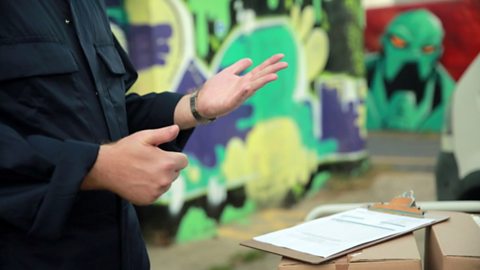Whole numbers and decimals
Watch the video to find out more.
Speaker: Not all numbers are whole numbers.
Decimals are numbers that are between two whole numbers.
So 1.4 is between 1 and 2.
A decimal that starts with a 0 before the decimal point is less than 1.
And you can add decimals together in lots of ways to get a whole one.
Reading decimals correctly
Test your knowledge with this activity.
Measuring effectively
Watch the video to find out more.
Speaker: When you're sewing, measuring correctly is very important and the decimals come into play.
Even if I've got the same digits in a number, if one has a decimal point in it and the other doesn't they will have different values because of that crucial decimal point.
For example, on the duvet cover I'm making, the gap between the buttons is 15 cm…
…and these buttons are 1.5 cm wide.
And if the digits moved again, then you're talking about something even smaller.
This elastic cord is just 1.5mm wide, which is the same as 0.15cm.
So, as the digits move in relation to the decimal point, the whole number gets 10 times smaller, or the whole number can become 10 times bigger and 10 times bigger again.
Putting decimals in order
Test your knowledge with this activity.
Breaking decimals down
Watch the video to find out more.
Speaker: I've got some fabric that's 1.5 metres wide and 9.5 metres long.
And I want to make three big floor cushions, each 1.5 metres square.
I hope I've got enough material.
That's six 1.5 metre square pieces to make three cushions.
So, to work out how much I need, I'm going to have to multiply 1.5 by 6.
It's sometimes easier when working with decimals to break the number down.
If I multiply the .5 by 6 first I get 3.
Then the 1 by 6, which is 6.
I add them together: the total is 9.
So if I take away 9 from the length of 9.5 fabric, I'll have 0.5 or half a metre left over, which is 50cm.
How much fabric is left over?
Test your knowledge with this activity.
More on Learn the basics
Find out more by working through a topic
- count1 of 9
